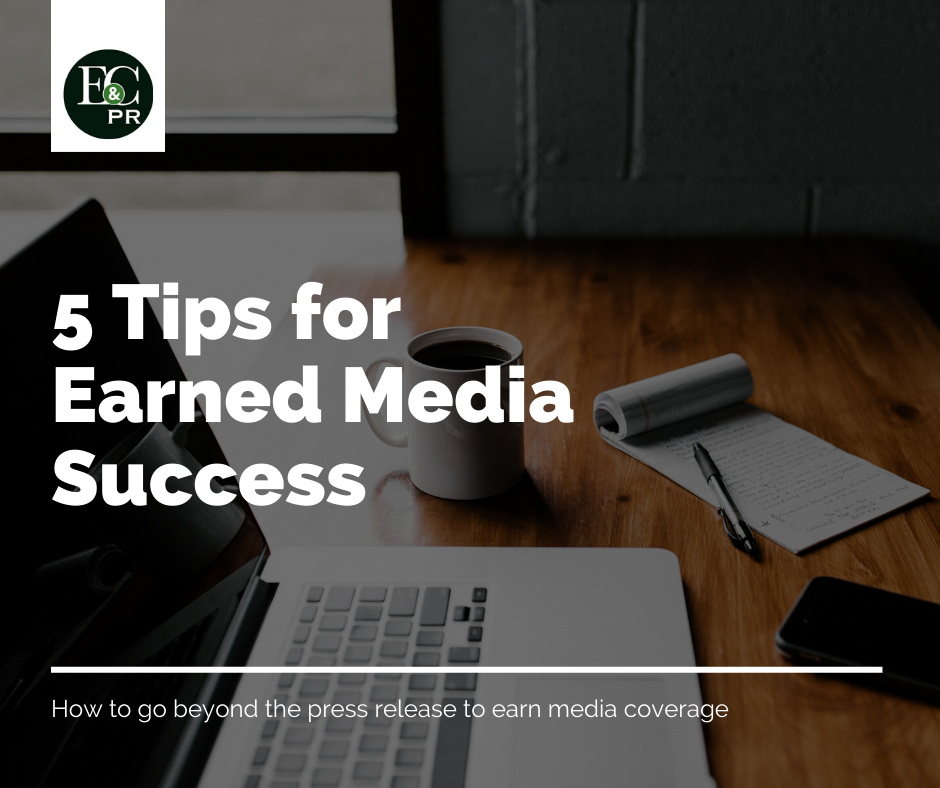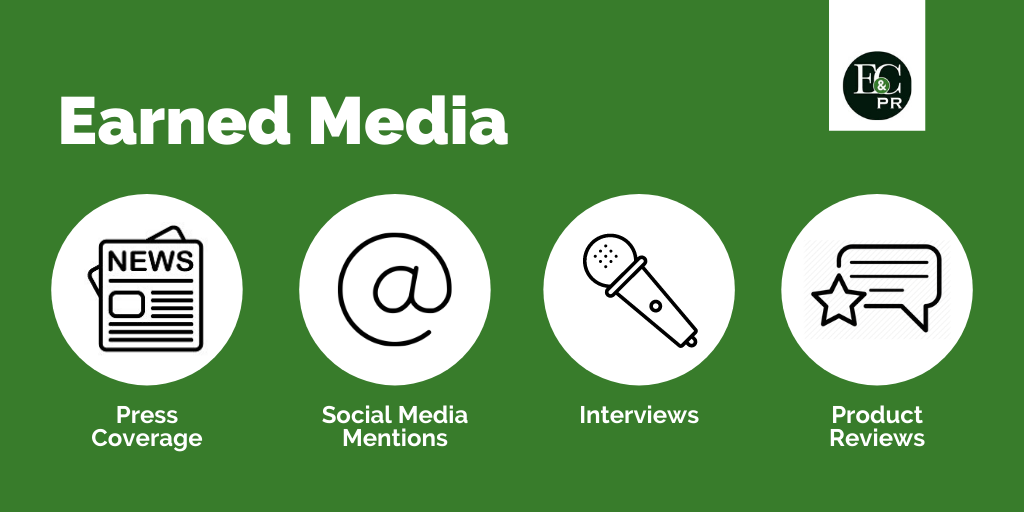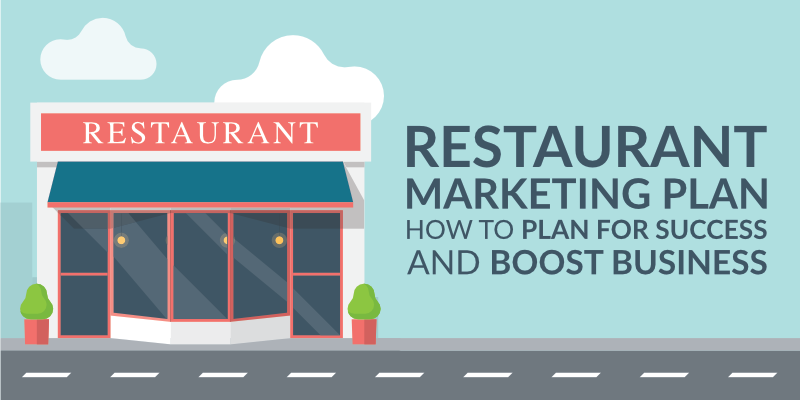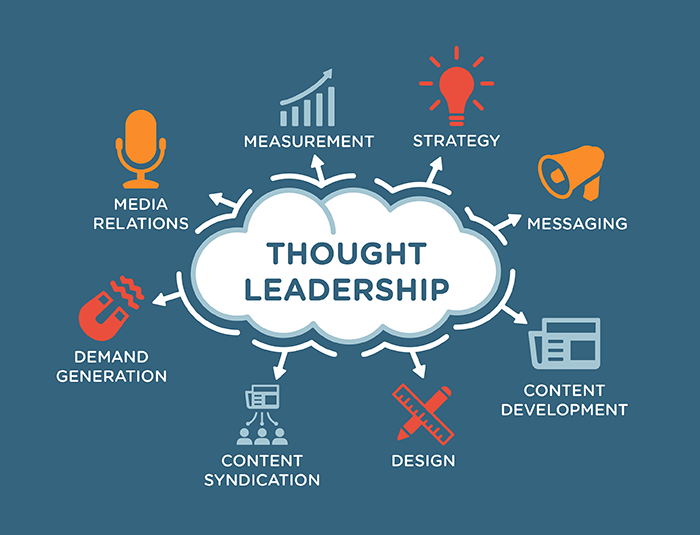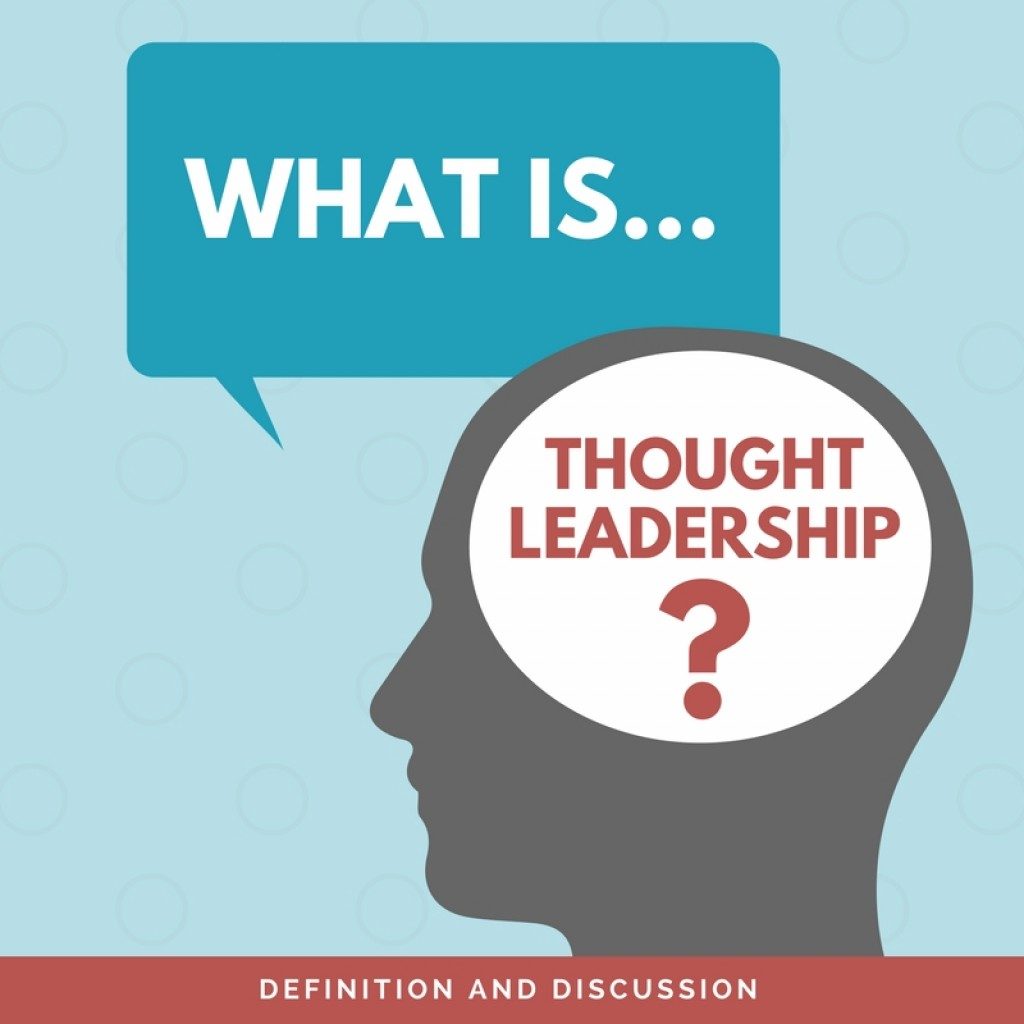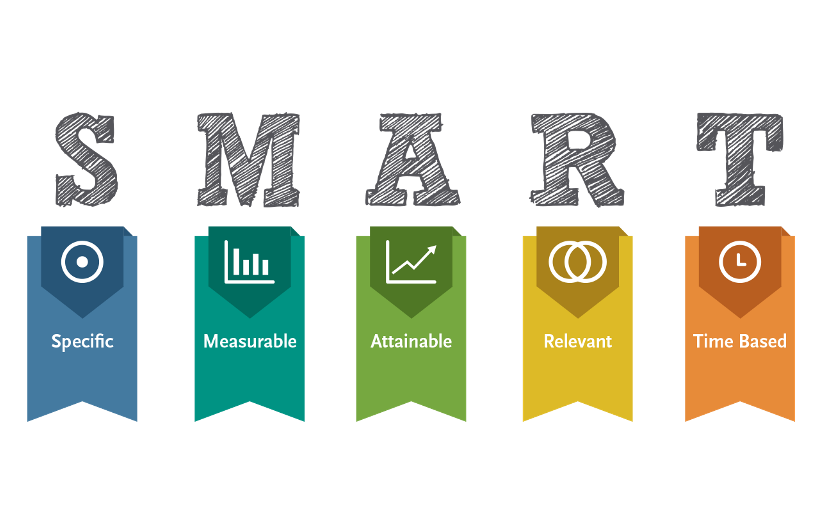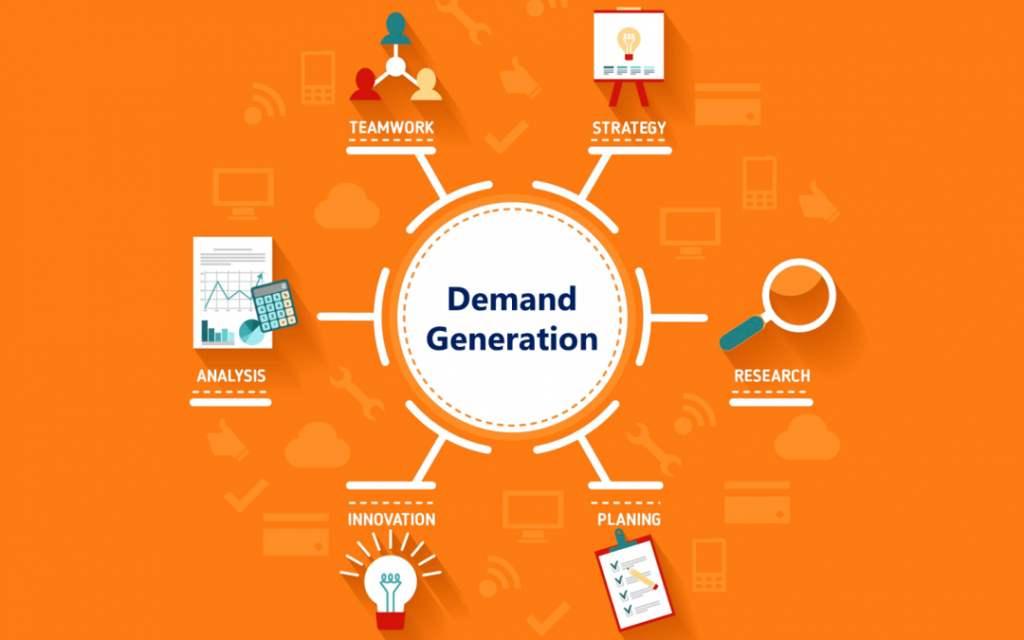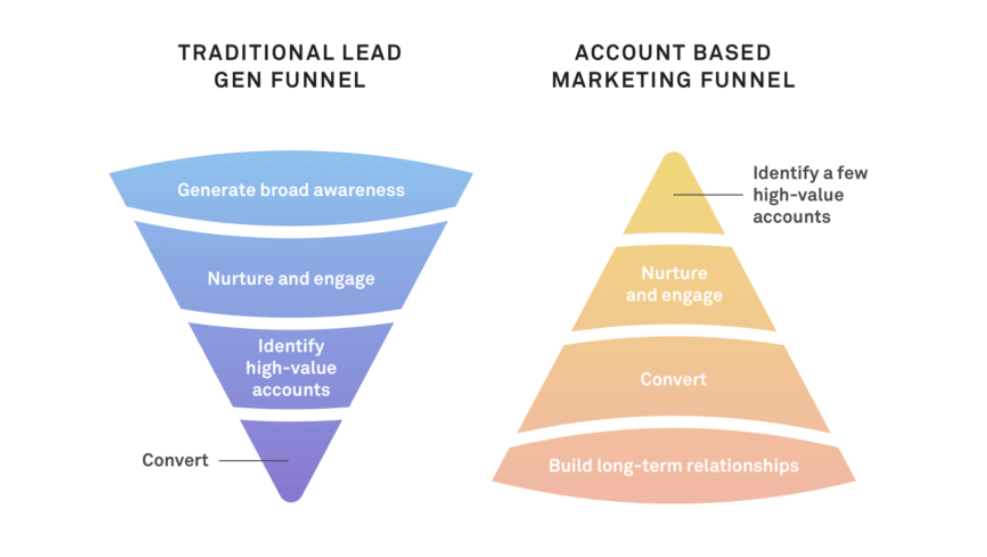Instagram’s permanence as one of the key elements of a multi-channel or omni-channel marketing strategy is not undocumented, to say the least. Through a quick Google search using the term “Instagram for businesses,” one can find about 7.9 billion search results; when amending the term to “Instagram for B2B business,” however, results drop significantly, causing some to wonder, should business-to-business (B2B) companies be using Instagram?
If you ask us, Instagram is one of the most accessible ways to reach valuable audiences – even if that audience includes other businesses. According to a recent study, there are more than 25 million businesses on Instagram. Additionally, 71 percent of all businesses in the United States use Instagram. Now, it is unclear in these statistics what portion of the 25 million business accounts are B2B companies versus business-to-consumer (B2C) or direct-to-consumer (D2C) brands. However, it should not (and does not) matter; through the aforesaid statistics, the notion of B2B companies not being on Instagram is simply baseless. B2B companies that could be your next customer or client are using Instagram, and they exist as an audience that needs to be unlocked through a strong social media strategy.
Before we delve further into how to leverage Instagram for B2B companies, we would be remiss if we were to not address one of the common objections to the platform we have heard all too often. It is not false that Instagram’s audience is younger. As of June 2020, the average user of Instagram (whether a personal account or operator of a business account) was 30 years old. Instagram undoubtably is the chosen social media platform for millennials and millennial owned-and-operated companies. But, these facts should not scare you away from using the platform for your business.
Millennials are currently the largest generation in the nation’s workforce, as they likely will be for another 30 years. The very youngest millennial is 24 years old, meaning the vast majority are well into their 30s, approaching their 40s, and beginning to occupy key roles of important companies. So, millennials are no longer a possible target audience to reach for your business – they are, in some ways, the primary target audience. And, what better and more immediate way to reach these younger audiences, now occupying decision-making roles at their companies, than on a platform in which they are familiar?
Beyond adapting to the current media landscape and adopting new methodology to connect with key decision makers, grow your businesses and increase sales, Instagram for B2B companies to immediately inject their target audiences with key information in an extraordinarily cost-effective manner. After all, it doesn’t cost budget to create an Instagram business account and manage its content.
We could go on and on about the value Instagram holds, and will continue to hold, as a key element of each of our clients’ marketing strategies. However, instead of telling you more about the ever-rewarding elements of Instagram, we thought it would be best to illustrate how to use Instagram for B2B marketing by taking a look at a few companies who we believe are leveraging unpaid social media content the right way on this essential social media channel.
- HubSpot
HubSpot, a software company that provides other businesses with valuable tools to implement and track marketing campaigns, conduct sales, manage customer service, and more, is a B2B company with a strong and creative presence on Instagram.
In the simplest of terms, HubSpot’s primary service is data collection and Customer Relations Management (CRM). Though, this service is not what keeps customers and clients; there are many B2B companies that provide similar, if not the same, services. For companies such as HubSpot to have a competitive edge over the competition, its leaders find ways to create added value both for their current and future customers.
Instagram is a highly useful tool for this very purpose; it can offer current customers an added value element, essentially offering its services at no cost in a way that is concise and easy to digest, and it shows future customers the quality of work that can be theirs if they used HubSpot’s services.
HubSpot’s use of Instagram Highlights, which can be created using specific topics / genres to archive Instagram Stories that would typically disappear in 24 hours, is especially unique. By posting easy-to-digest, helpful tips that come packaged in creative graphics, HubSpot is delivering to its current customers value-added insight. This additional insight does not cost the customer a penny and is just as accessible (if not more accessible) than scheduling a meeting with a representative from HubSpot. For HubSpot, this extremely helpful function offered to their followers, current customers and future customers does not negatively affect revenue.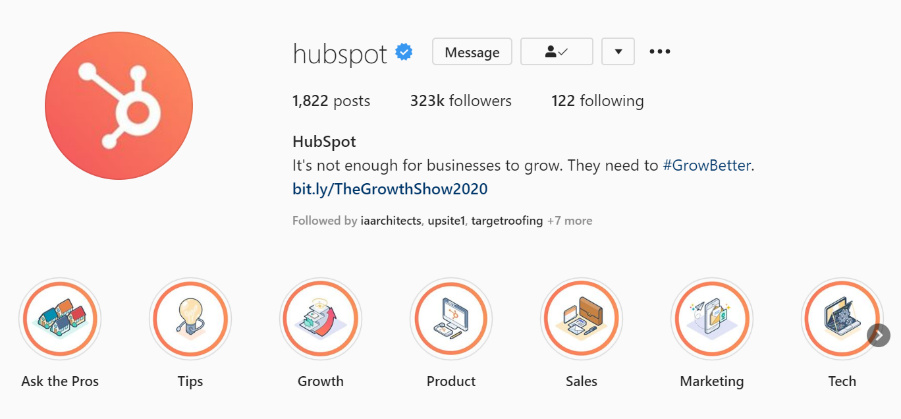 In addition to HubSpot’s strategic use of Instagram Highlights and Stories, their organic (i.e. unpaid) posts are also a great case study in how B2B businesses can utilize unpaid social media via Instagram. Throughout their feed, HubSpot creates helpful, creative and encouraging content that does not sell their software, but promotes their brand as a whole. The Instagram content is also highly relevant, and not over-the-top promotional content in a less-than-ideal economy.
In addition to HubSpot’s strategic use of Instagram Highlights and Stories, their organic (i.e. unpaid) posts are also a great case study in how B2B businesses can utilize unpaid social media via Instagram. Throughout their feed, HubSpot creates helpful, creative and encouraging content that does not sell their software, but promotes their brand as a whole. The Instagram content is also highly relevant, and not over-the-top promotional content in a less-than-ideal economy.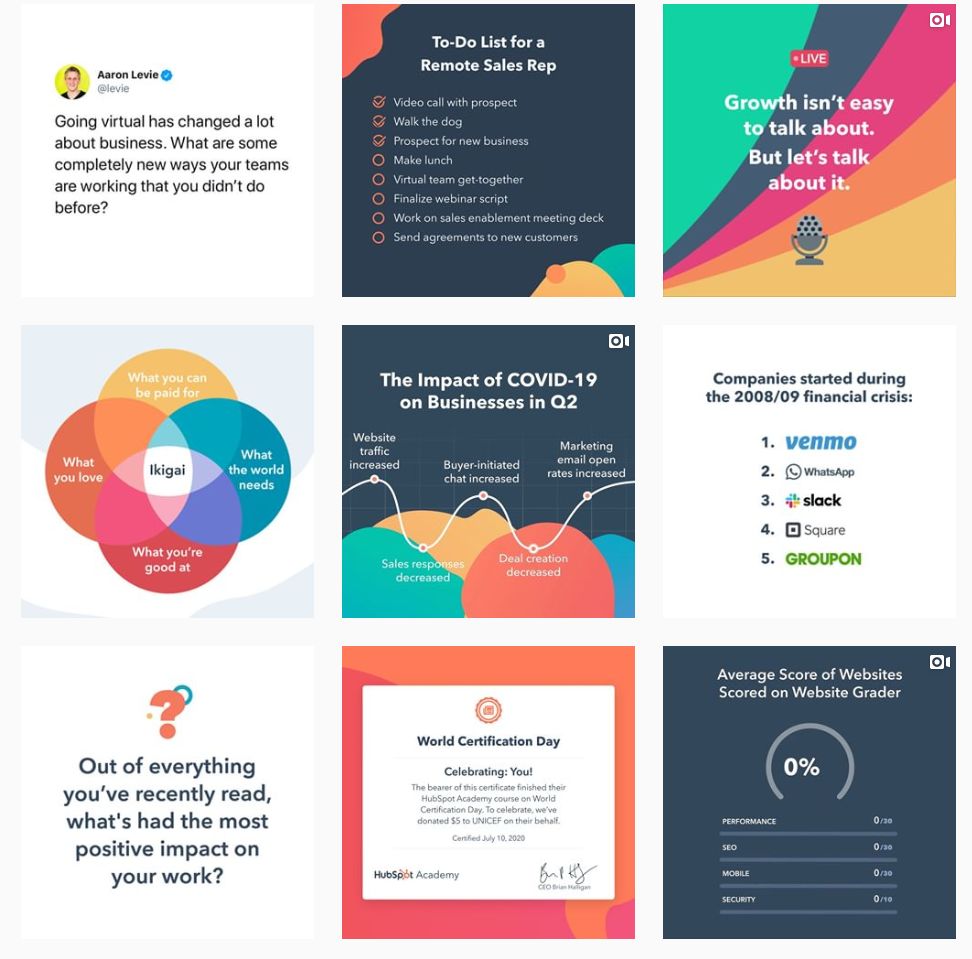
- Jamestown
Another good example of a B2B company leveraging Instagram to retain current contracts while attracting new tenants, is Jamestown, a national real estate investment and property management company. Jamestown’s unpaid Instagram content creation gives potential clients and customers a look at their brand DNA without having to read a mission statement filled with detectably insincere and promotional marketing content.
In all industries whose work primarily serves the so-called “built environment,” sustainability has been, and will be, a major deciding factor for new business. Jamestown appears as a company committed to sustainability as soon as their profile is opened. The user’s eyes are first drawn to their Highlights, where one can view all the steps Jamestown has taken, via their Sustainability and Corporate Social Responsibility
Report, to ensure their properties are sustainable in ecological and community-based contexts. This is an especially attractive and effectively positioned selling point for companies looking to have aligned views with the people in which they do business.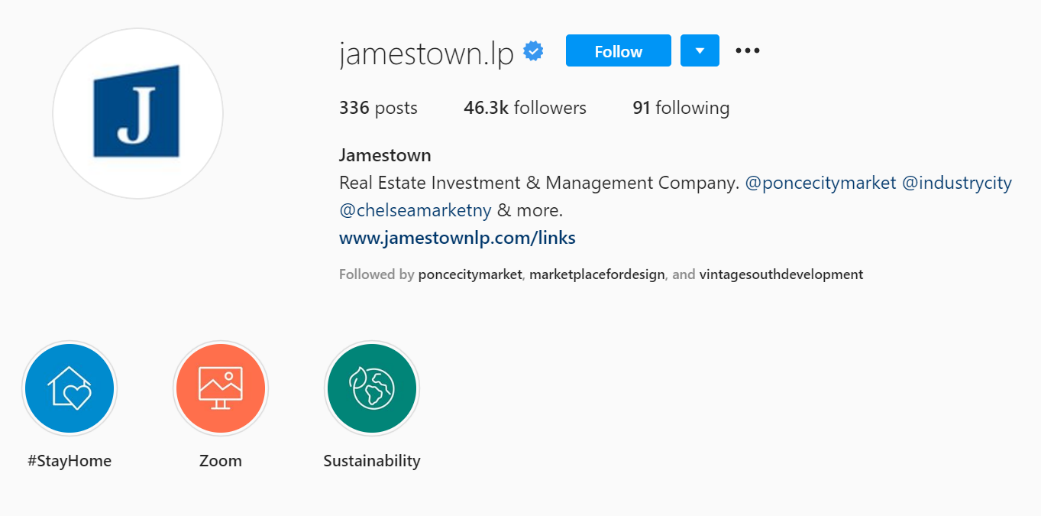 Jamestown’s Instagram also tells a story of how a B2B business that exclusively sells an in-person experience is operating in the middle of a pandemic, when it is recommended people spend their time away from other people in enclosed spaces.
Jamestown’s Instagram also tells a story of how a B2B business that exclusively sells an in-person experience is operating in the middle of a pandemic, when it is recommended people spend their time away from other people in enclosed spaces.
So, how does a commercial real estate and property management company continue to generate revenue and attract new tenants in this socially distanced economy? The answer can be easily uncovered by spending just a minute on their Instagram feed: they do not promote product or service; they promote culture. After a quick scroll, you can easily find that Jamestown is profiling all the wonderful work their tenants are doing – don’t you want to be a part of this culture of innovation by becoming a Jamestown tenant? This is the question Jamestown is hoping you are asking yourself.
After a quick scroll, you can easily find that Jamestown is profiling all the wonderful work their tenants are doing – don’t you want to be a part of this culture of innovation by becoming a Jamestown tenant? This is the question Jamestown is hoping you are asking yourself.
In sum, Instagram is a great platform to let others know your company culture without needing to set foot in an office.
- Eberly & Collard Public Relations
Our continued use of unpaid Instagram for B2B clients lies within our own success on the platform. At Eberly & Collard Public Relations, we use Instagram for many of the same reasons as the previous examples, but it primarily allows us to provide our current and potential audiences with samples of our expertise in a concise, bit-sized chunks.
The amount of work that goes into each case study we publish on our website is rather immense. The case studies are very thorough and involve various creative processes, such as packaging our data into unique, visually appealing graphics that must be informative, but are not fatigue-inducing.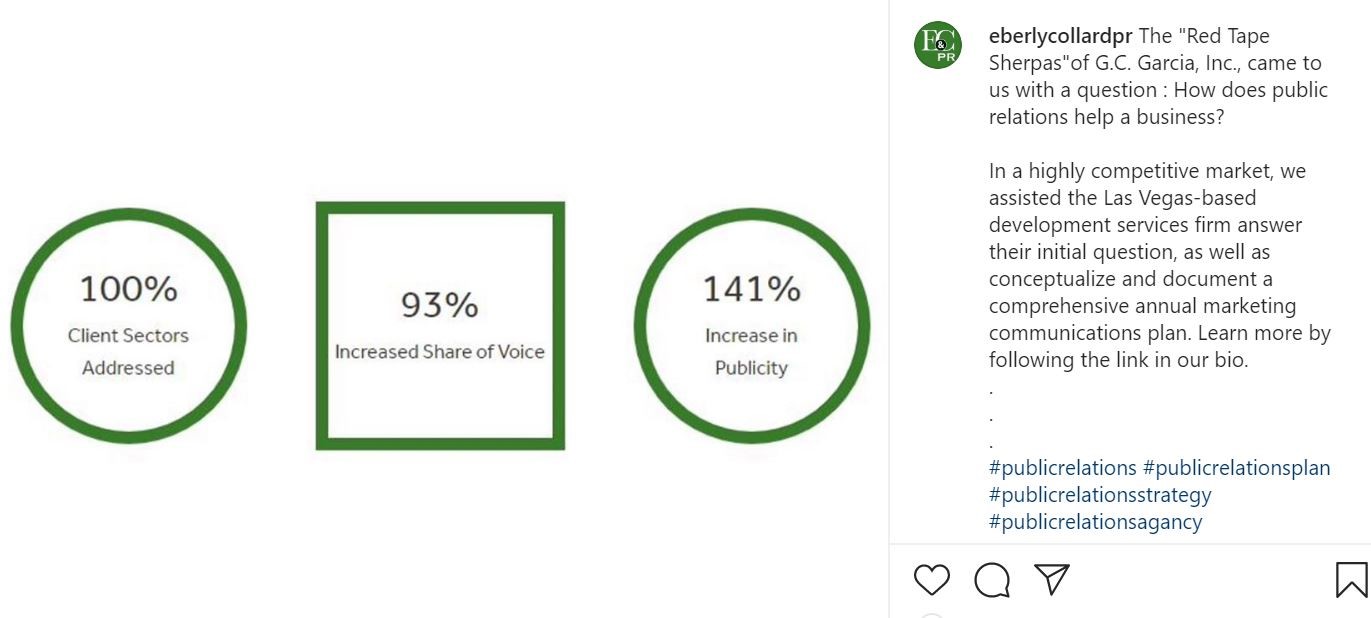 Though these case studies are many times viewed by users organically entering our website, whether through google or another search engine, Instagram allows us another channel to deliver this information to potential clients. And, since these case studies are often lengthy, Instagram gives us a platform to creatively package and deliver them to our followers in a way that is not inconvenient for them to view and is rewarding in some way.
Though these case studies are many times viewed by users organically entering our website, whether through google or another search engine, Instagram allows us another channel to deliver this information to potential clients. And, since these case studies are often lengthy, Instagram gives us a platform to creatively package and deliver them to our followers in a way that is not inconvenient for them to view and is rewarding in some way.
We like to think of posting bite-sized versions of our case studies in the same way an ice cream shop thinks about offering samples; it’s low risk (you won’t go broke giving out ice cream samples) and the reward can exponentially increase revenue (new, and possibly returning, customers or clients). So, take some time to show prospects and customers the top-of-the-line service you’d be able to offer them through creative, succinct Instagram posts that offer a look at what your business can do for them.
- Gensler
Gensler’s Instagram feed and Highlights illustrate a trend we think all engineering, planning and design firms should adopt. Every step of the design-build process involves a great deal of collaboration that can rarely be created without an in-person element. However, we live in challenging times, and successful businesses must adapt.
Gensler is utilizing its unpaid Instagram Stories and Highlights to showcase to their B2B clients exactly how well they are adapting to this new way of collaboration, by highlighting the fact their employees’ capabilities are not suppressed from working from home, but rather, enhanced.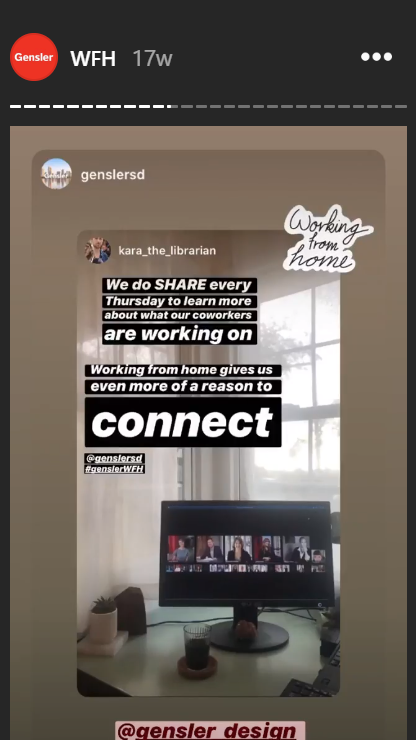 How could you apply something like this to your own business? Show your clients and customers it has been business as usual by encouraging employees to take pictures of their at-home workspace, tagging your company’s handle and then adding their WFH experiences to your company’s Instagram story.
How could you apply something like this to your own business? Show your clients and customers it has been business as usual by encouraging employees to take pictures of their at-home workspace, tagging your company’s handle and then adding their WFH experiences to your company’s Instagram story.
This gives potential customers or clients an idea of company culture. By visibly empowering your employees by highlighting their capabilities to produce at a high level from home, you are showing key target audiences that nothing, not even a pandemic, can slow your company from delivering high-level products or services.
- General Electric
Though some may only know General Electric (GE) as a manufacturer of home appliances, GE’s scope of work extends far beyond a home’s kitchen, and into aerospace, power grid solutions, healthcare, and more. So, B2B sales are a very important and large revenue stream for the company.
As COVID-19 began to ramp up in late-March and early-April, many feared the effects the virus would have on production and the supply chain. Numerous companies that are essential to the U.S. power grid, aviation, etc., were worried some of their suppliers would not be able to produce and deliver vital products.
General Electric, however, made its message of resilience and persistence clear via their Instagram channel. In viewing GE’s Instagram feed, the company has been focusing on the ways their employees have continued to make innovations in manufacturing throughout the pandemic, especially as it relates to healthcare and medical devices.
If you are a manufacturer or supplier, Instagram can be an easy-to-use tool for your company to show your partners and current customers you are still working around the clock to deliver on orders. GE wanted to make clear through their unpaid Instagram content that nothing could slow down their innovation, even while many are working from home.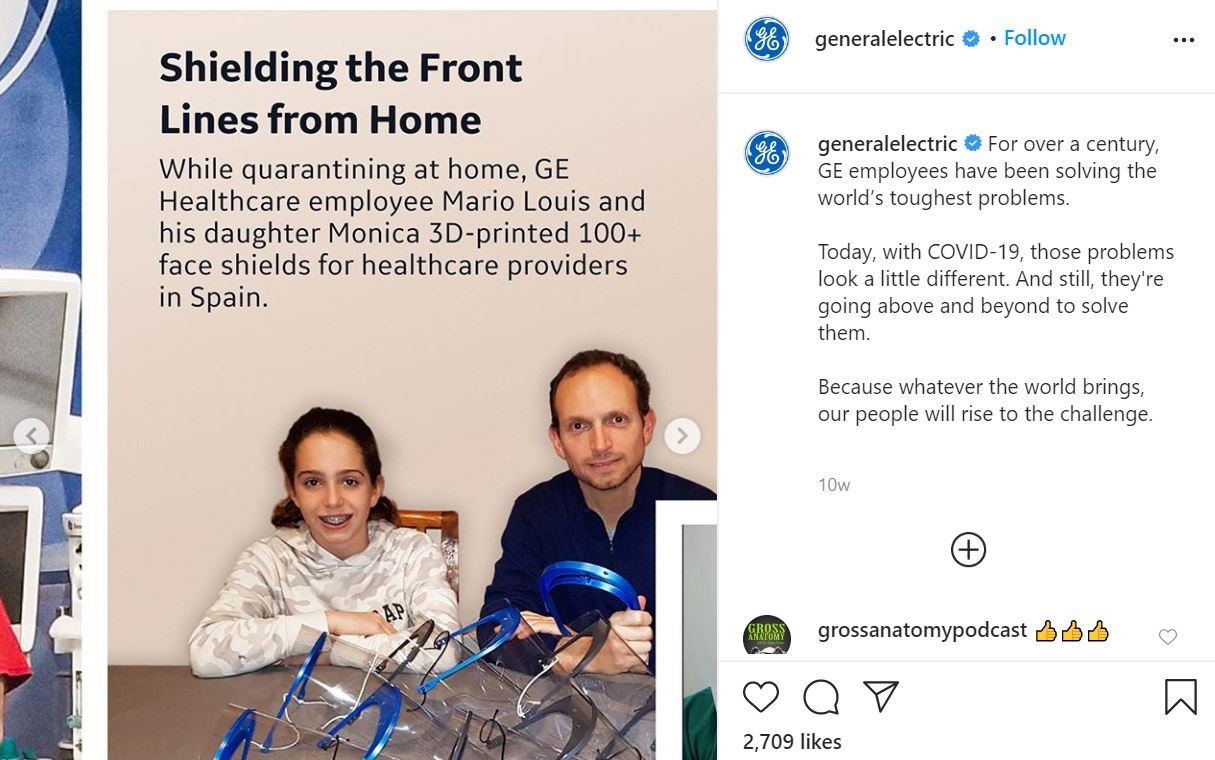 Unpaid Instagram for B2B companies can be a gamechanger in the cost-efficient economy we are currently working in right now. This organic content, which can be created in-house or by a fully integrated marketing agency, is a relatively low-risk, low-cost way to attract new business, and retain current business.
Unpaid Instagram for B2B companies can be a gamechanger in the cost-efficient economy we are currently working in right now. This organic content, which can be created in-house or by a fully integrated marketing agency, is a relatively low-risk, low-cost way to attract new business, and retain current business.
Instagram is no longer a novelty social media platform for lifestyle, travel and consumer brands; it has fully cemented itself as the most influential social media platform for businesses across the globe, some say, even more so than LinkedIn. The reason being? LinkedIn helps individual people connect, but its functionality is not very friendly for businesses. Instagram allows businesses, made up of people, connect with other businesses and people, in a streamlined, and sometimes intimate, manner.
Contact us when you are ready to make a strategic difference in how your business utilizes tools such as Instagram. At Eberly & Collard Public Relations, we guide our clients on an upward trajectory to uncover and harness the power of both paid and unpaid social media to turn internet website voyeurs into real customers or clients.
